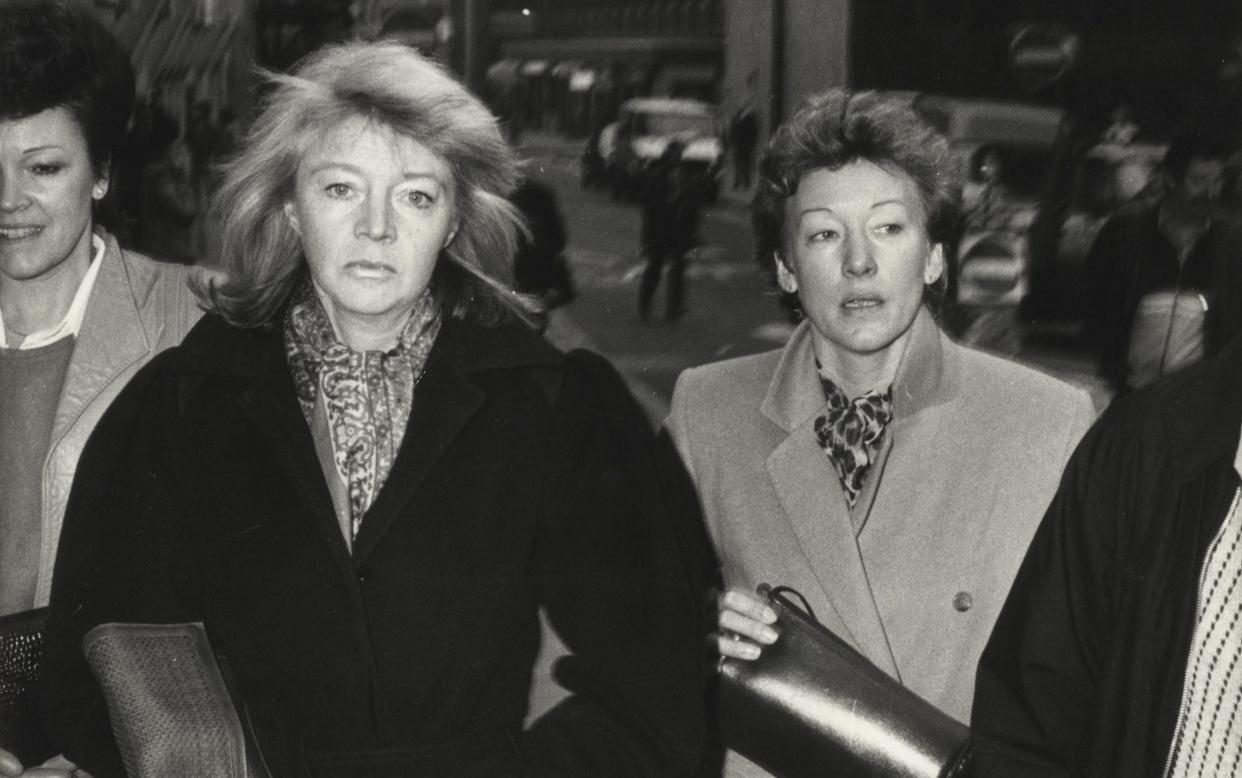The ‘last of the gentleman thieves’ – who took his secrets to the grave

He was arguably Britain’s most prolific thief, making more than £200 million from jobs such as the Brink’s-Mat robbery and the Hatton Garden heist. He was also nicknamed “the Guv’nor”, and immortalised on film by none other than Michael Caine. Yet even in death, Brian Reader, who has passed away aged 84, is still frustrating the authorities and taking secrets to his grave – such as exactly how much loot he squirrelled away, how and where.
His demise itself was something of a swindle. Reader actually succumbed to colon and prostate cancer in September 2023 at his home in Dartford, Kent, but the news was initially concealed by his family – adult children Paul, 60, and Joanne, 59 (Reader’s wife, Lyn, died in 2009). However, only now has a death certificate, listing his profession not as a crook but a “retired gardener”, finally confirmed his passing.
“His death came as no surprise,” one source in the know has commented, “but for some reason, his family and the criminal fraternity have been desperate to keep it a secret. They did not want it reported on and didn’t want any fuss around the funeral.”
It stayed quiet for so long, the source claimed, because of the ruthless reputation of Reader and his associates. “Nobody wanted to cross them by revealing the secret.”
The fact that they did manage to keep it under wraps in these oversharing times is indicative of the fact that Reader is a figure from another age. One copper memorably labelled him “the last of the gentleman thieves”, and many have fallen for the romantic mythology surrounding Reader and his exploits. But is that really the legacy he deserves, or do those thrilling tales contribute to a rose-tinted view of a dangerous career criminal?

Reader began his thieving early, in the south London docks. He was born in Lewisham in 1939, and deserted by his father when he was still a boy, leaving him as the main breadwinner. By the age of 11, Reader was nicking tinned fruit from local shops, which landed him in juvenile court in 1950. He received a 12-month conditional discharge.
Prof Dick Hobbs, a specialist in organised crime at the University of Essex, described the area as “the blagger docks – a den of thieves”, which produced “the top villains in London. For someone like Brian Reader, it was like going to Eton.”
Reader was a diligent pupil. Aged 18, he was up at the Old Bailey, given two years’ probation for grievous bodily harm with intent and burglary. He then began to think bigger – much bigger.
Supported by a colourfully named gang known as the “Millionaire Moles”, which included “Dirty Tony” Hollands, a renowned safe-cutter, John “The Face” Goodwin and Mickey “Skinny” Gervaise, Reader masterminded a string of major heists in the Sixties.
That culminated in two massive hauls: £500,000 (£7 million today) from raiding a post office in 1969, and a further £3 million (£37 million today) in 1971 from a Lloyds Bank on Baker Street, though he denied involvement in the latter.
Oddly, alongside these nefarious activities, Reader was also establishing himself as a doting family man. In 1963, he married bookies’ assistant Lyn Kidd, and the couple had a son in 1964 and a daughter in 1965.
One of Reader’s friends recalled that he would always go home to his wife at night. “Unlike most successful criminals, he never had mistresses.” Reader took the family on holidays to Spain, or skiing in the French Alps. Lyn, in turn, always remained loyal.
More cynically, a detective who was involved in Reader’s later arrest pointed out that because he “never did a day’s legitimate work in his life, he had lots of time with his kids and wife”.
Still, life was hardly easy: in 1971, Reader had a lucky escape after suffering a serious head injury during planning for a bank robbery in Reading. He was surprised while scouting out the local telephone exchange and fell out of a window. His brain damage was so severe that he had to learn how to walk again. He was also fined £35 by the Magistrates’ Court.
None of that deterred him. Nov 26 1983 saw one of the largest robberies in British history, when six men broke into the Heathrow International Trading Estate and made off with around £26 million worth of diamonds, cash and gold bullion.
Reader and notorious gangster Kenneth Noye, to whom he was close, melted down large amounts of the bullion so that it could be sold without giving the game away. However, Noye was put under police surveillance, and in January 1985 he stabbed undercover officer John Fordham to death, later claiming self-defence. Reader was with him at the time.

Both were found not guilty of the officer’s murder, but Reader was jailed for nine years for handling stolen goods, money laundering and fraudulently evading VAT. Reader’s son was also arrested for contempt of court after he shouted that Reader had been “f---ing stitched up”.
It was at this moment that one detective commented that Reader and Noye were “chalk and cheese”, before adding the “gentleman thief’ epithet. Another officer, however, claimed that Reader viciously kicked the dying Fordham while he was lying on the ground.
A second puzzle is what happened to all that gold – more than half of which remains missing. Reader was desperate to find it, according to a former associate, and became convinced that a Hatton Garden diamond dealer had stashed it in his safety deposit boxes. “He did know every inch of Hatton Garden, after all,” the associate said. “It had always been his manor and his contacts there were formidable.”

Is that why Reader was tempted into “one last job”, that classic crime drama staple?
Following his release from prison, Lyn, now a riding instructor, made Reader promise to live a normal life, and the family took the assumed name McCarthy. They moved to Dartford, where Reader and son Paul ran a second-hand car dealership. Lyn died of cancer in 2009.
By 2015, the 76-year-old Reader had also been diagnosed with cancer, in his case prostate. But he couldn’t resist taking on the Hatton Garden heist, accompanied by a gang of so-called “Diamond Wheezers”.
During the Easter bank holiday weekend in April, these elderly thieves posed as construction workers, gained entrance through a lift shaft, and drilled a hole in the 50cm-thick concrete vault wall beneath 88-90 Hatton Garden. There they ransacked 73 safety deposit boxes, stealing around £14 million (£19 million today) of bullion, jewellery, gems and valuables such as designer watches – one of the biggest burglaries in English history.
The unlikely story of this Dad’s Army-style gang captured the public’s imagination, and Reader became the star of several dramas. He was played variously (and largely flatteringly) by Larry Lamb, Michael Caine and Kenneth Cranham.

But the heist wasn’t actually a success: the tricks they had learnt in another era did little to conceal their activity and the police were immediately on the gang’s trail. Peter Spindler, the former Scotland Yard commander who oversaw the investigation, commented: “They were analogue criminals ill prepared for digital detectives.” They were filmed discussing the heist in pubs, were recorded on audio bugs reliving their thrill of the raid and were constantly ringing each other on mobile phones, before and after the heist.
In 2016, Reader pleaded guilty and received a six-year prison sentence but in the same year he was moved from Belmarsh Prison to an intensive care unit at Queen Elizabeth Hospital, south-east London, and then, after suffering a series of strokes, he was released in 2018 on health grounds. A judge ruled he wouldn’t have to return to prison for not paying back his £6.6 million share of the robbery.

But just where did the treasure go? It’s estimated that only £4.3 million has been recovered of that £14 million. Unless Reader tipped someone off, his share at least will remain a mystery.
He was certainly comfortable financially. Last year, Reader sold three houses on his 7,000 sq ft Dartford estate for a reported £2.5 million. Had he sunk some of his ill-gotten gains into those properties?
As for Reader’s legacy, there’s a lingering affection for his old-school brand of robbery – targeting commercial premises, meaning corporate victims or millionaires stashing their (insured) goods. So what’s the harm? Reader slots into a grand tradition of audacious thieves, from Robin Hood to Danny Ocean and Arsène Lupin.
Peter Bleksley, a former Metropolitan Police detective, takes a different view. Commenting on Reader’s passing on Tuesday night, he said: “All this stuff about being a ‘gentleman thief’ is complete nonsense. Reader, Noye and other south London gangsters of that era were the most unpleasant criminals imaginable.”
Either way, we’re unlikely to see their kind again, with a report by the British Bankers’ Association (now UK Finance) reporting a 90 per cent drop in robberies on British bank branches in the decade from 1992. Criminals now have moved online: your bank account is more likely to be scammed than robbed.
In the first half of 2023, criminals stole £580 million via fraud, according to UK Finance, with 77 per cent of Authorised Push Payment fraud losses driven by online platforms and telecommunications. As Ben Donaldson, UK Finance’s managing director of economic crime, pointed out, such activities involve “callous manipulation of the victim which can cause psychological and emotional harm”.
Compare a long-term, devastating romance scam to Reader nicking a few diamonds, and you can understand why this thief – whether or not he really was a “gentleman” – captured the public’s imagination and why his death marks the closing of a chapter in British history. Perhaps that is his greatest heist of all.


